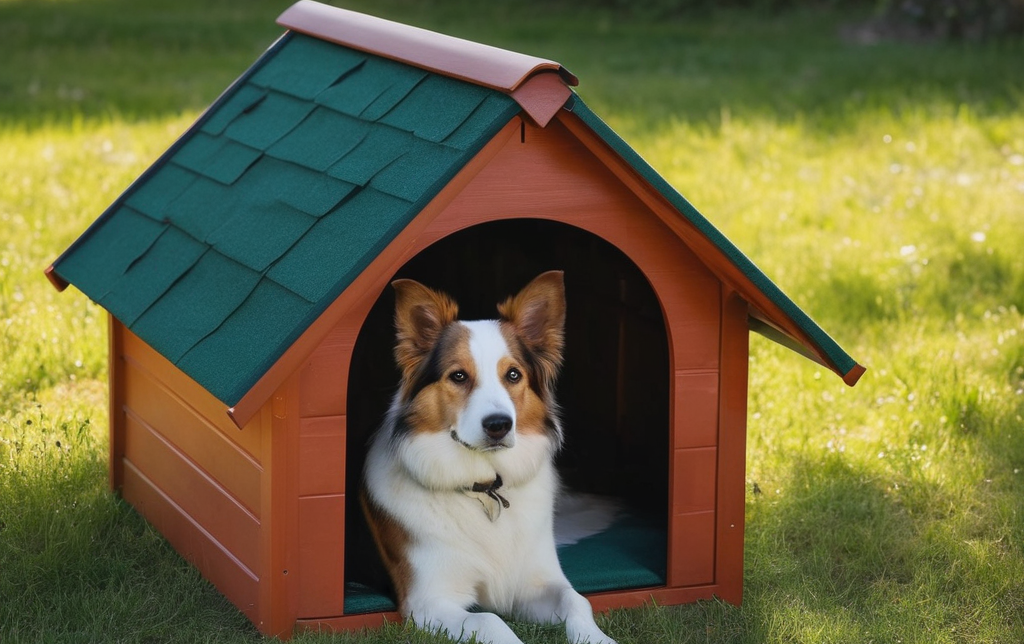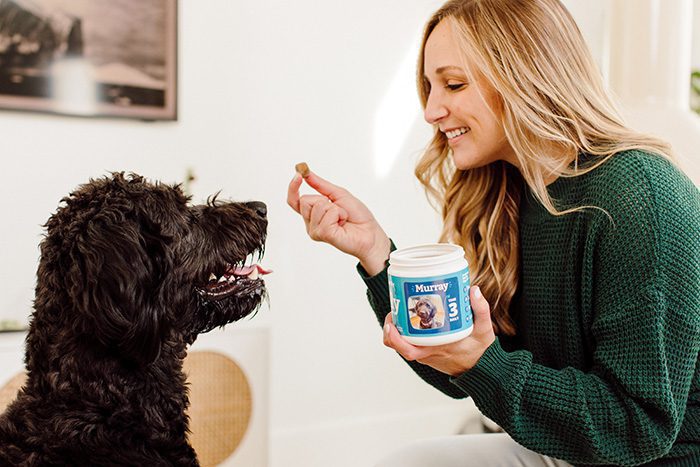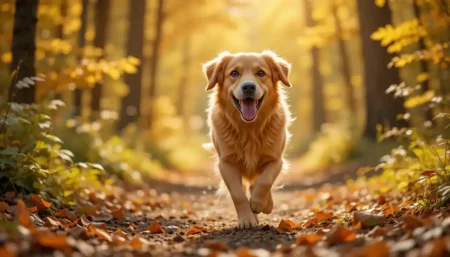Outdoor dog kennels are secure, weather‑proof enclosures that give your pet a safe place to rest, play, and stay protected outside. They combine sturdy construction, proper ventilation, and comfortable flooring to meet a dog’s basic needs when indoor space is limited.
In this guide, we’ll show you how to pick the right kennel, compare materials, size it correctly, weather‑proof it for every season, add essential accessories, and keep it clean—so your outdoor dog kennel truly goes beyond the basics.
Understanding Outdoor Dog Kennels
Outdoor dog kennels are more than a simple fenced‑in area. They are purpose‑built structures designed to keep dogs safe from the elements, predators, and escape risks while providing a comfortable “home away from home.”
Key benefits of a well‑chosen outdoor dog kennel
- Protection from weather: insulated walls, roof overhangs, and drainage keep dogs dry in rain, snow, or intense sun.
- Safety and security: lockable doors, sturdy frames, and secure flooring prevent escapes and deter intruders.
- Mental stimulation: a dedicated space encourages natural behaviors like digging, chewing, and watching the yard.
- Convenient pet management: keeps the dog confined to a specific area for feeding, bathing, and training.
By investing in a quality outdoor dog kennel, you safeguard your dog’s health and relieve the stress of constant supervision.
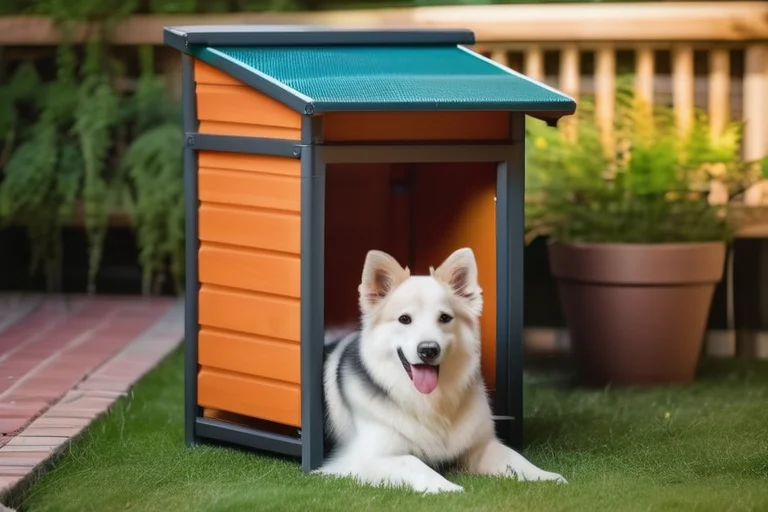
Essential Features to Look for in Outdoor Dog Kennels
When shopping for an outdoor dog kennel, focus on the features that translate into everyday comfort and longevity.
Sturdy Construction
- Frame material: steel or reinforced wood provides durability; avoid thin‑gauge metal that may bend.
- Welded joints or heavy‑duty bolts: ensure the structure can withstand wind and active dogs.
Proper Ventilation
- Mesh windows or slatted walls: promote airflow while keeping pests out.
- Adjustable vents: let you regulate temperature in summer or winter.
Secure Flooring
- Elevated platforms: prevent moisture buildup and deter burrowing.
- Non‑slip surfaces: rubber matting or textured wood reduces injury risk.
Easy Access
- Wide door openings: at least 24 inches tall for larger breeds.
- Low‑step entry: ideal for senior dogs or those with joint issues.
Weather‑Proof Roof
- Overhanging eaves: help shed rain away from the entryway.
- Insulated panels: add a layer of warmth during cold months.
Additional nice‑to‑have features
- Built‑in shade panels or UV‑blocking fabric.
- Removable interior panels for easy cleaning.
- Compatibility with heating pads or cooling mats.
Comparing Common Outdoor Dog Kennel Materials
Choosing the right material affects cost, durability, and maintenance. The table below breaks down the most popular options.
| Material | Durability | Weather Resistance | Maintenance | Typical Cost (USD) |
|---|---|---|---|---|
| Pressure‑treated wood | High (if properly sealed) | Good; resists rot with sealant | Periodic staining or painting | $150‑$350 (DIY kit) |
| Galvanized steel | Very high | Excellent; rust‑proof coating | Wipe down to prevent dust buildup | $200‑$500 (pre‑made) |
| Heavy‑duty plastic | Moderate | Very good; won’t rust or rot | Simple soap‑water rinse | $120‑$300 (modular) |
| Composite (wood‑plastic blend) | High | Good; UV‑stabilized | Minimal, occasional cleaning | $250‑$450 (premium) |
How to pick the best material for your situation
- Climate: If you live in a humid region, galvanized steel or composite resists corrosion better than plain wood.
- Budget: Plastic kits are the most affordable, while composite kits offer a middle ground between cost and longevity.
- Aesthetic preference: Wood blends naturally into garden settings; metal offers a sleek, modern look.
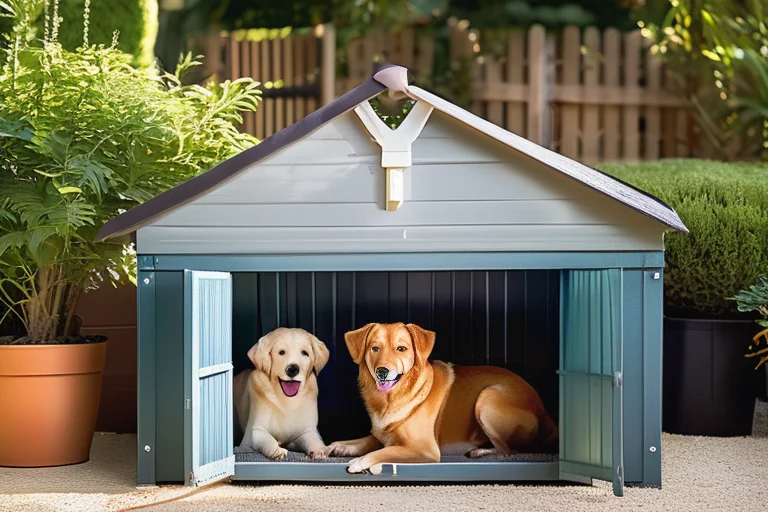
DIY vs. Pre‑Made Outdoor Dog Kennels – Pros and Cons
Building your own kennel can be rewarding, but buying a ready‑made unit saves time. Here’s a quick comparison.
DIY Outdoor Dog Kennels
- Customization – tailor size, shape, and accessories to your dog’s exact needs.
- Cost control – you can source reclaimed lumber or discounted hardware.
- Sense of achievement – personal involvement often leads to better maintenance.
Cons
- Requires tools, carpentry skills, and at least a weekend to finish.
- Mistakes in framing or ventilation can compromise safety.
Pre‑Made Outdoor Dog Kennels
- Instant setup – most arrive with pre‑assembled panels and clear instructions.
- Professional engineering – tested for wind load, weight capacity, and durability.
- Warranty protection – manufacturers often guarantee against defects.
Cons
- Limited design flexibility; you may need to adapt your yard.
- Higher upfront cost, especially for premium brands.
Decision tip: If you enjoy hands‑on projects and have space for a workshop, a DIY kennel can be a fun family activity. If you need a reliable solution fast, a pre‑made model is the safer bet.
How to Choose the Right Dimensions for Your Dog
An outdoor dog kennel that’s too small can cause stress, while one that’s too big wastes space and material. Use these guidelines to get the perfect fit.
Step‑by‑step sizing formula
- Measure your dog’s length from nose to base of tail. Add 24 inches for comfortable turning space.
- Measure height from the floor to the top of the head (when sitting). Add 12 inches for vertical clearance.
- Add a “play zone” of at least 2 square feet per 10 pounds of body weight for activity.
Example
- A medium Labrador (30 inches long, 24 inches tall, 70 lb).
- Required length: 30 + 24 = 54 inches.
- Required height: 24 + 12 = 36 inches.
- Play zone: (70 lb ÷ 10) × 2 sq ft = 14 sq ft extra.
Result: Minimum interior floor space of roughly 5 ft × 4 ft, with a ceiling height of 3 ft.
Special considerations
- Breed‑specific needs: Hounds love to dig, so a deeper floor may be necessary.
- Age and health: Senior dogs benefit from low‑step entry and softer bedding.
- Multiple dogs: Add at least 30 % extra space per additional dog to avoid territorial aggression.
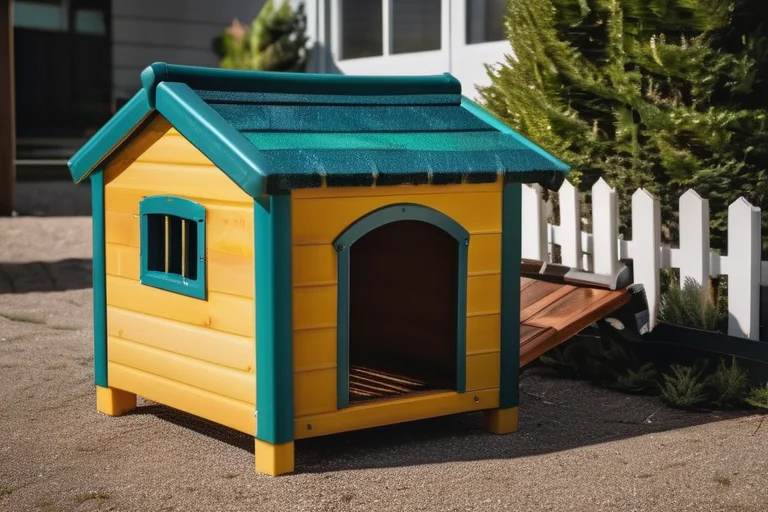
Weatherproofing Your Outdoor Dog Kennel for All Seasons
A weather‑ready kennel keeps your pet comfortable year‑round and prolongs the structure’s life. Follow these practical steps.
Insulation & Draft Control
- Add rigid foam panels inside walls for winter warmth.
- Seal gaps with weather‑resistant caulk around doors and joints.
Roofing & Drainage
- Install a sloped roof (minimum 5% pitch) to direct rain away.
- Place rain gutters or a simple drip edge to funnel water from the entryway.
- Create a floor drain or slope the floor toward a corner for puddle elimination.
Sun and Heat Management
- Mount reflective shade cloth on the roof during hot months.
- Use a vented attic space under the roof to allow hot air to rise and escape.
Winter Warmth Add‑Ons
- Thermal blankets or heated mats rated for pets (set on low).
- Windbreaks: Place lattice or solid panels on the windward side of the kennel.
Seasonal Maintenance Checklist
| Season | Action |
|---|---|
| Spring | Install heating mats, add extra bedding, and check for ice buildup |
| Summer | Add shade cloth, verify ventilation openings aren’t blocked |
| Autumn | Seal any cracks, clear leaves from drainage paths |
| Winter | Install heating mats, add extra bedding, check for ice buildup |
By treating your outdoor dog kennel as a seasonal project, you’ll keep it comfortable and structurally sound regardless of the weather.
Must‑Have Accessories for Outdoor Dog Kennels
Even the toughest kennel feels like home when you add thoughtful accessories. Below are the essentials that enhance comfort, safety, and convenience.
Comfort & Bedding
- Weather‑proof bedding: waterproof crate mats or raised dog beds keep moisture away.
- Orthopedic foam pads: great for senior dogs with joint issues.
Feeding & Hydration Stations
- Elevated water bowls prevent contamination from puddles.
- Automatic feeders ensure regular meals when you’re away.
Enrichment & Exercise
- Chew‑resistant toys anchored to the kennel walls.
- Interactive puzzles that stimulate mental activity.
Safety Enhancements
- Locking latch kits with child‑proof mechanisms.
- Predator deterrent devices (motion‑activated lights or ultrasonic emitters).
Cleaning Tools
- Portable grooming kits with brush, clippers, and wipes.
- Disinfectant spray safe for pets (e.g., diluted hydrogen peroxide).
Quick tip: Rotate toys weekly to keep your dog’s interest high and prevent boredom.

Keeping Your Outdoor Dog Kennel Hygienic
Regular upkeep prevents odors, parasites, and structural decay. Follow this systematic plan.
Daily Quick‑Care Routine (5‑10 minutes)
- Spot‑clean any messes with pet‑safe wipes.
- Refresh water and check for debris in the bowl.
- Check latch and door hinges for proper closure.
Weekly Deep‑Cleaning Checklist (15‑30 minutes)
- Sweep the floor to remove hair, dirt, and droppings.
- Scrub surfaces with a mixture of warm water and mild dish soap.
- Rinse bedding or replace with fresh pads.
Monthly Maintenance Tasks (30‑45 minutes)
- Inspect the roof for loose shingles or cracks.
- Apply a protective coating (e.g., wood sealant or rust‑inhibiting spray) if needed.
- Check for wear on door hinges, bolts, and ventilation grills; tighten or replace as required.
Seasonal Deep‑Clean (1‑2 hours)
- Power‑wash the exterior (use low pressure to avoid damaging wood).
- Disinfect with pet‑safe solution (e.g., 1 cup of white vinegar per gallon of water).
- Replace or treat bedding with anti‑mite sprays.
By adhering to this schedule, your outdoor dog kennel stays fresh, safe, and extends its lifespan for years to come.
Preventing Escapes and Guarding Against Predators
A secure kennel protects your dog from wandering and from external threats. Implement these safeguards.
Reinforced Locks and Latches
- Double‑bolt system: one latch at the top, one at the bottom, both requiring a key.
- Tamper‑resistant screws: discourage curious dogs from unscrewing panels.
Perimeter Barriers
- Sturdy fence line: at least 6 feet high with no gaps larger than 2 inches.
- Bottom barrier: bury wire mesh 6‑12 inches underground to stop digging.
Predator Deterrents
- Motion‑activated lights: flash brightly when wildlife approaches.
- Ultrasonic alarms: emit high‑frequency sounds that deter coyotes and foxes without disturbing humans.
Visibility & Surveillance
- Transparent side panels (e.g., polycarbonate) let you watch your dog and spot potential threats.
- A security camera mounted at kennel height offers real‑time monitoring.
Emergency Escape Plan
- Install a quick‑release door on the inside for fire or other emergencies (accessible only by you).
- Keep a portable crate nearby to move the dog if the kennel becomes compromised.
A combination of physical barriers and technology creates a reliable safety net for your outdoor dog kennel.
Inspiring Outdoor Dog Kennel Designs
Seeing how other owners have built or selected their kennels can spark fresh ideas. Below are three popular setups, each with a different focus.
The “Garden Oasis” – A Wooden Escape for Small Breeds
- Materials: pressure‑treated cedar with a natural oil finish.
- Features: raised floor, skylight for natural light, and built‑in herb garden for scent enrichment.
- Why it works: Cedar repels insects, the raised floor prevents moisture, and the garden provides calming aromas.
The “Industrial Loft” – A Steel Kennel for Active Medium Dogs
- Materials: galvanized steel frame with reinforced plastic panels.
- Features: sliding garage‑door style entry, detachable insulated roof, integrated heating pad.
- Why it works: the steel resists heavy chewing, the insulated roof keeps the temperature stable, and the heating pad is ideal for colder climates.
The “All‑Season Pod” – Composite Cube for Large Working Dogs
- Materials: composite wood‑plastic blend, UV‑stabilized coating.
- Features: multi‑zone interior (sleep, eat, play), storm‑door lock, removable side panels for ventilation.
- Why it works: composite material handles harsh weather, the multi‑zone layout gives the dog choice, and the lock meets security standards for larger breeds.
Takeaway: Choose a design that matches your dog’s size, temperament, and the climate you live in—then personalize with accessories that make the kennel feel like home.
FAQs
How big should an outdoor dog kennel be for a medium‑sized breed?
Aim for at least 5 ft × 4 ft of floor space with a ceiling height of 3 ft, plus an additional 30 % for a play area. This size lets the dog lie down comfortably, turn around, and have room for toys.
Can I place an outdoor dog kennel directly on grass?
Yes, but it’s best to install a raised platform or concrete pavers underneath. This prevents water pooling, deters digging, and makes cleaning easier.
What is the safest latch type for an outdoor dog kennel?
A double‑bolt lock with a key‑operated latch offers the highest security. Look for corrosion‑resistant hardware and ensure the bolts engage both on the top and bottom of the door.
How often should I clean the bedding inside the kennel?
Replace or wash bedding once a week for active dogs and every 2–3 weeks for less active pets. Spot‑clean daily to keep odors and parasites at bay.
Are heated mats safe to use in an outdoor dog kennel?
Pet‑rated heated mats with automatic shut‑off and a low‑wattage setting are safe for outdoor use, provided they are placed on a waterproof surface and inspected regularly for wear.
Conclusion
Outdoor dog kennels provide a secure, weather‑proof sanctuary that supports your dog’s physical health and mental well‑being.
By selecting the right size, durable material, and essential features—such as ventilation, sturdy locks, and proper flooring—you create a space that goes beyond basic containment.
Add seasonal weatherproofing, practical accessories, and a regular cleaning routine to keep the kennel comfortable and hygienic year‑round.
Finally, tailor the design to your dog’s breed, age, and lifestyle, and you’ll have an outdoor dog kennel that not only protects but also enriches your pet’s daily life.
Actionable tip: Before you finalize your purchase or build, sketch a simple floor plan, list must‑have accessories, and run a “fit test” with a tape measure around your dog.
This quick step ensures that the outdoor dog kennel you choose is perfect for both you and your four‑legged companion.





